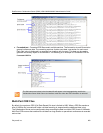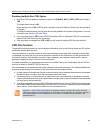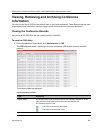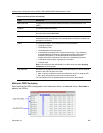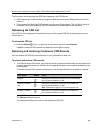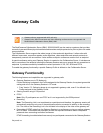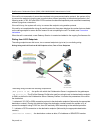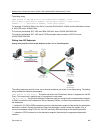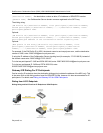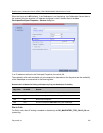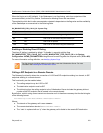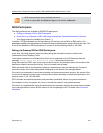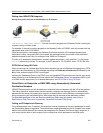
RealPresence Collaboration Server (RMX) 1500/1800/2000/4000 Administrator’s Guide
Polycom®, Inc. 608
If the call is not answered or it cannot be completed using one communication protocol, the system will try
to connect the endpoint using the next communication protocol according to the selected protocols in the
following order: H.323, SIP and ISDN. PSTN numbers are identified separately and are dialed immediately
without trying other connections.
If the call is busy, the system will not try to connect the endpoint using another protocol.
If the call is not completed after trying all possible protocols, the system displays the number that was dialed
on the calling endpoint’s screen and the reason for not completing the call. For details, see Connection
Indications.
When the call is connected, a new Gateway Session is created and added to the ongoing Conferences list.
Dialing from H.323 Endpoints
The calling endpoints can dial to one, two or several endpoints (up to ten) in one dialing string.
Dialing String and Call Flow from H.323 Endpoint to One, Two or Three Endpoints
The dialing string includes the following components:
[MCU prefix in GK] - the prefix with which the Collaboration Server is registered to the gatekeeper.
[GW Profile ID] - The ID of the Gateway Profile to be used for routing the call to the destination endpoint
or DMA, as defined in the Collaboration Server Gateway Profiles. It includes the parameters of the call to
the destination.
* - indicates H.323, SIP or ISDN connection protocol to the destination endpoint (followed by the appropriate
destination number). Placing this delimiter before the destination number causes the system to try to
connect the endpoint using H.323 first, then SIP and lastly ISDN according to the selected protocols.
** - indicates a PSTN connection to the destination endpoint (followed by the appropriate destination
number).
[Destination number] - the destination number as alias, IPv4 address or ISDN/PSTN number.



